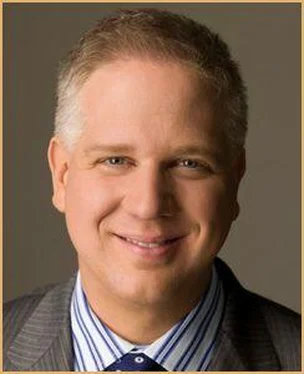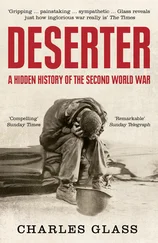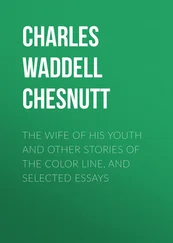“How about these?”
“No, sir.”
Miles was furious. “How can I conduct a fair board of inquiry if people believe the lies in these publications?” He picked up the Evening Star . “In this story they claim that Sitting Bull ambushed Custer at the Battle of the Little Bighorn and they call him ‘the assassin of the brave Custer.’ Nothing could be further from the truth! Custer was the one to attack and he was outmaneuvered.”
He traded the Evening Star for Harper’s . “In this issue, the artist Frederic Remington turns the Wounded Knee massacre into a glorious triumph and writes that Big Foot’s band was the worst of their race. His illustrations are pure fiction.”
Then he picked up Leslie’s and read from it. “In the annals of American history, there cannot be found a battle so fierce, bloody, and decisive as the fight at Wounded Knee Creek between the Seventh Calvary and Big Foot’s band of Sioux. This affair at Wounded Knee was a stand-up fight of the most desperate kind, in which the entire band was annihilated.”
Miles violently swept the newspaper and magazines off the table and onto the floor. Where had this information come from? He did not believe reporters invented stories, so someone had to be feeding these accounts to the newspapers. Ever since he had relieved Colonel Forsyth of his command pending an investigation, army officialdom seemed intent on hiding the real story. He suspected that Whitside was part of the effort to recast the massacre as an honorable battle.
Miles supported his weight with two fists anchored against the table. He breathed hard for almost a full minute before lifting his head and looking Whitside directly in the eyes.
“Major, I called you here for a simple question. I want a yes-or-no answer. Will you testify truthfully at the hearing?”
Whitside answered without hesitation, “Yes, sir.”
Pine Ridge, South Dakota
January 14, 1891
“These are your findings?” General Miles asked.
The investigating officers, Major J. Ford Kent and Captain Frank D. Baldwin, had concluded their investigation the day before. They’d found little fault in Forsyth’s conduct.
Kent answered. “Yes. Testimony supplied no evidence or indication of fault by Colonel Forsyth.”
“I saw the field of battle three days after the incident, but still frozen in time,” Miles said. “Anyone with two eyes could see fault. Did you examine Major Whitside’s map of the troop and gun placements?”
“We did,” Kent said. “It was deemed flawed, but not negligent.”
After his personal examination of Wounded Knee, Miles had ordered Whitside to go back and draw a detailed map of the Sioux and cavalry positions. He wanted an accurate drawing for the record because he believed the troop placement had been reckless.
“And all the dead women and children. No fault?”
“Testimony showed great forbearance by our troopers. Major Whitside testified that the Sioux fired fifty shots before his men returned fire. Every witness testified that some noncombatants were unfortunately shot by our men due to the warriors running amongst them, but that Sioux warriors killed the large majority of them by firing into or across their own women and children.”
“Do you believe that?” Miles asked.
“We have no evidence to the contrary.” Kent glanced at Baldwin for reassurance and got a nod. “The testimony was very consistent.”
“I want you to reopen the inquiry. Find testimony that is consistent with the facts on the ground, not a story concocted after the fact.”
“But General—”
“That’s an order, Major. Dismissed.”
Pine Ridge, South Dakota
January 20, 1891
Major Kent and Captain Baldwin sat nervously in front of the general’s desk.
General Miles read the conclusion of the revised report aloud: “Colonel Forsyth’s command was not held at a safe distance, and the attack of the Indians resulted in a surprise to the troops.”
He threw the report on the table, and looked at Major Kent. “That’s it? He positioned his troops too close and thus allowed himself to be surprised? That’s the most mild censure I’ve ever read.”
“General, we have no evidence of malfeasance . . . and we have a surfeit of testimony to the opposite. We can rule no other way.”
“Perhaps, but I can make my own recommendation.”
“General, may I speak freely?” Kent asked.
“You may.”
“There is word going around that you are intent on railroading Colonel Forsyth because the Sitting Bull and Wounded Knee incidents will hurt your career.”
“Does that make sense to you?” Miles asked.
“Sir, I have never known you to be vindictive.”
“I was speaking logically, Major. If the army wants to portray Wounded Knee as a stand-up victory over heavily armed savages, wouldn’t I be best served by going along with that story? Wouldn’t a military victory enhance my career?”
Kent looked confused. “Then why so many inquiries, sir?”
“Because I promised the Sioux survivors that I would investigate and punish any wrongdoers.”
“Sir? You’re doing this because of a promise you made to Indians?”
“No, I’m doing this because it is right.”
Washington, D.C.
February 7, 1891
General John Schofield, commanding general of the United States Army, read the recommendation that accompanied the Board of Inquiry findings. General Miles had been harsh on Colonel Forsyth, and, by doing so, had by default been harsh on the United States Army.
“Troops were not disposed,” Miles’s report read, “to deliver its fire upon the warriors without endangering the lives of some of their own comrades.” Later, Miles commented on the fact that many of the Indians had already been disarmed, writing: “A large number of the 106 Sioux warriors were without firearms when the outbreak occurred.”
Throughout the document, General Miles had used words like “inexcusable,” “apathy,” “neglect,” “contempt,” and “incompetence.” He went on to make the worst accusation that can be leveled against a field-grade officer. “Colonel Forsyth was inexperienced in the responsibility of exercising command.”
Schofield knew that this report would not only ruin Colonel Forsyth’s career, it would reflect badly on the army. And for what purpose? Miles’s recriminations were at odds with most newspaper accounts of the battle, not to mention the testimony of soldiers present that day. Even retired general William T. Sherman, who had been Schofield’s predecessor as commanding general of the army, had taken Forsyth’s side. “If Forsyth was relieved because some squaws were killed,” Sherman had written, “then somebody had made a mistake, for squaws have been killed in every Indian war.”
Schofield picked up a pen and paused briefly before writing to his boss, the secretary of war.
The interests of military service do not, in my judgment, demand further proceedings in this case, nor any longer continuance of Col. Forsyth’s suspension from the command of his regiment. The evidence in these papers shows that great care was taken to avoid unnecessary killing of Indian women and children.
In my judgment, the conduct of the regiment was well worthy of the commendation bestowed upon it by me in my first telegram after the engagement.
He concluded that the soldiers had displayed great forbearance and that units under Forsyth’s command had shown excellent discipline.
General Schofield reread his report. He was pleased. This would finally set the record straight.
Pine Ridge, South Dakota
February 17, 1891
Col. Forsyth Exonerated, His Action at Wounded Knee Justified, Decision of Secretary Proctor on the Investigation—The Colonel Restored to the Command of His Gallant Regiment
Читать дальше












